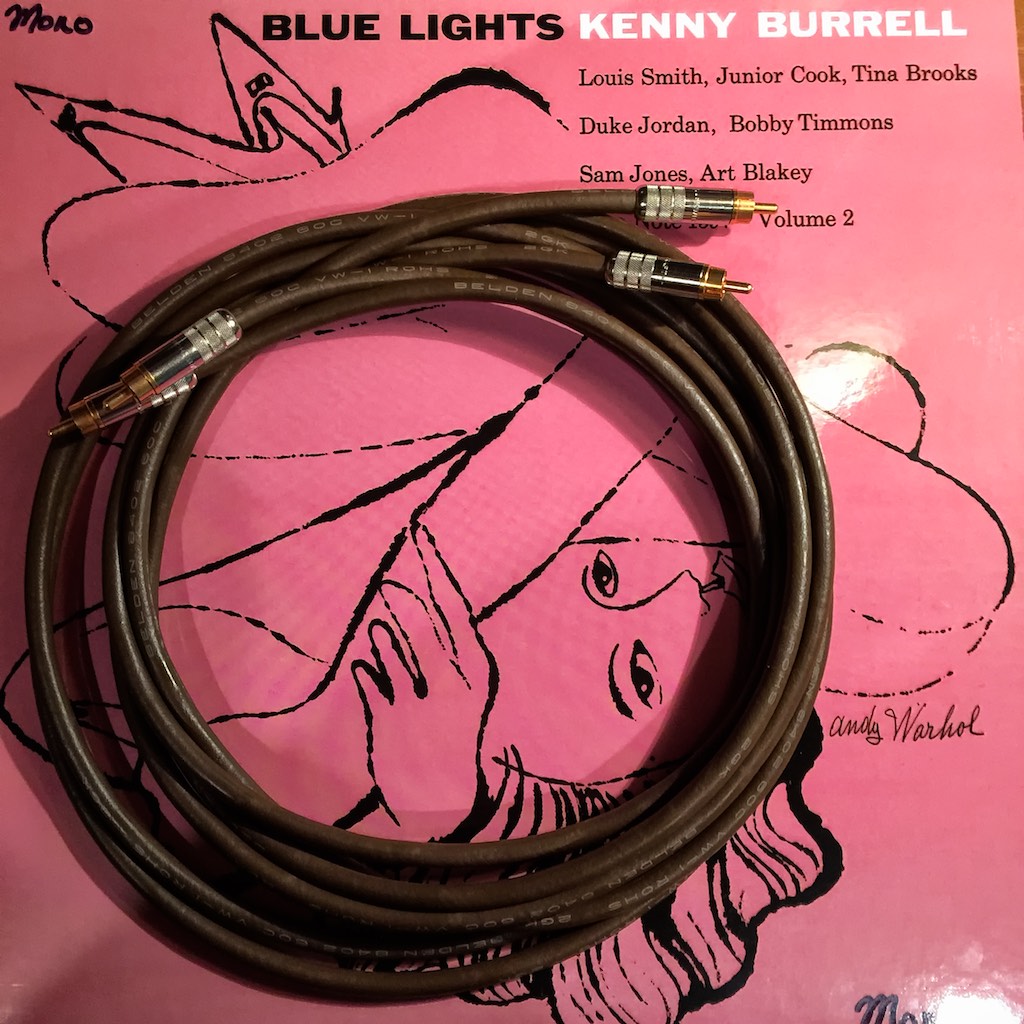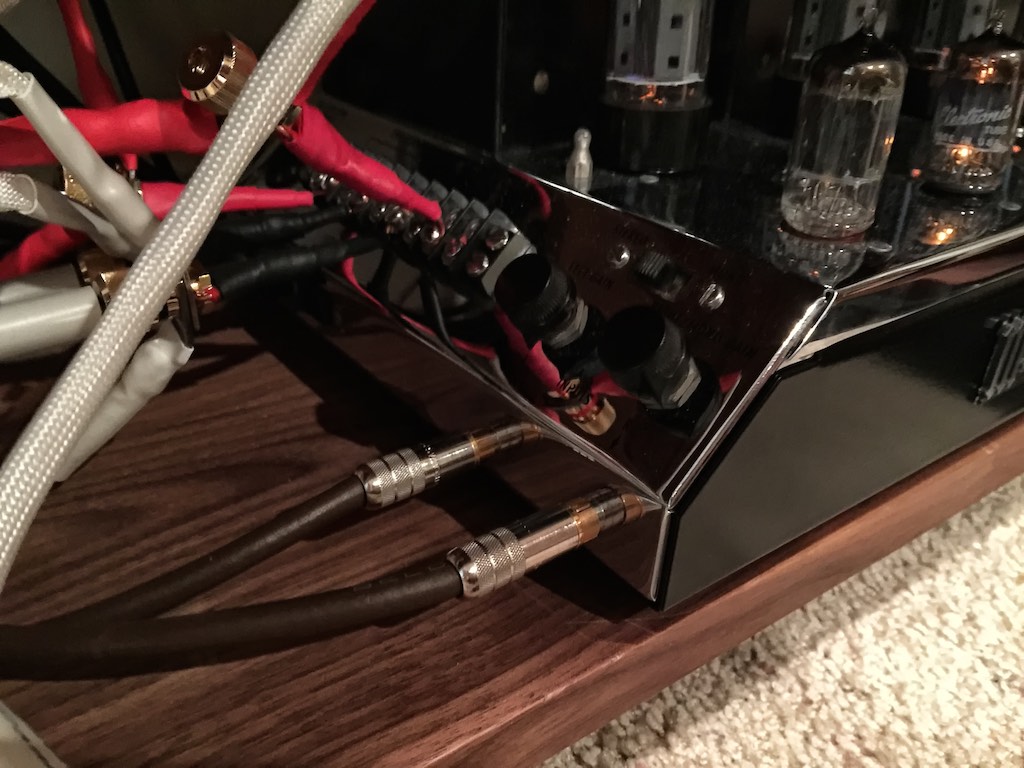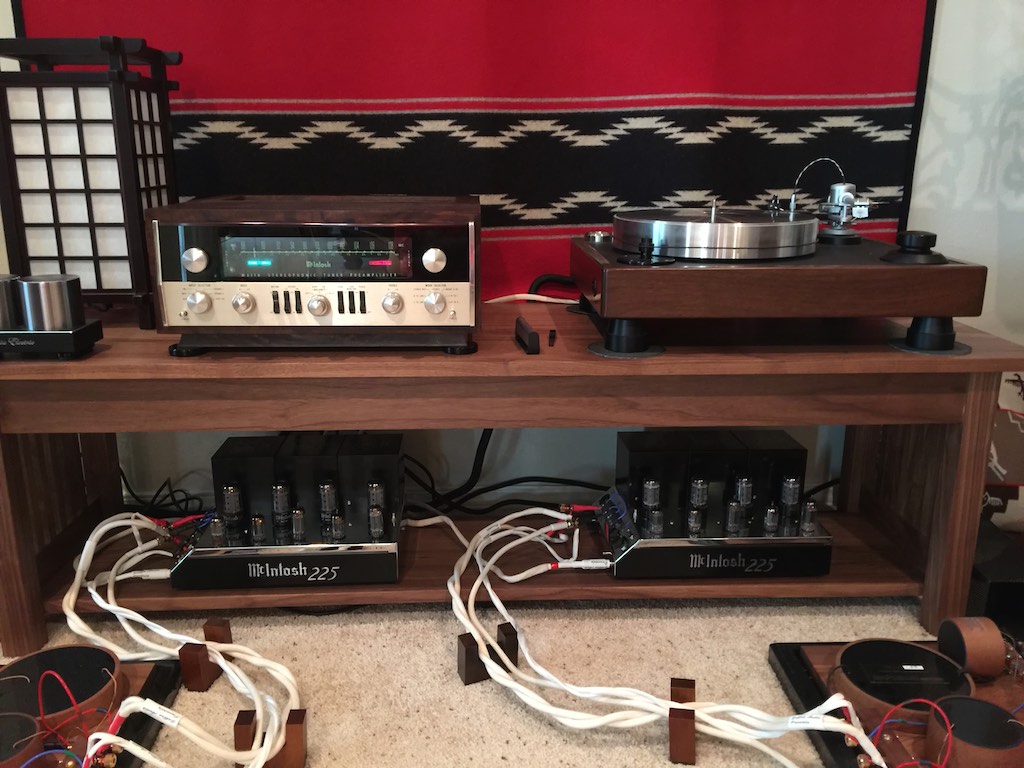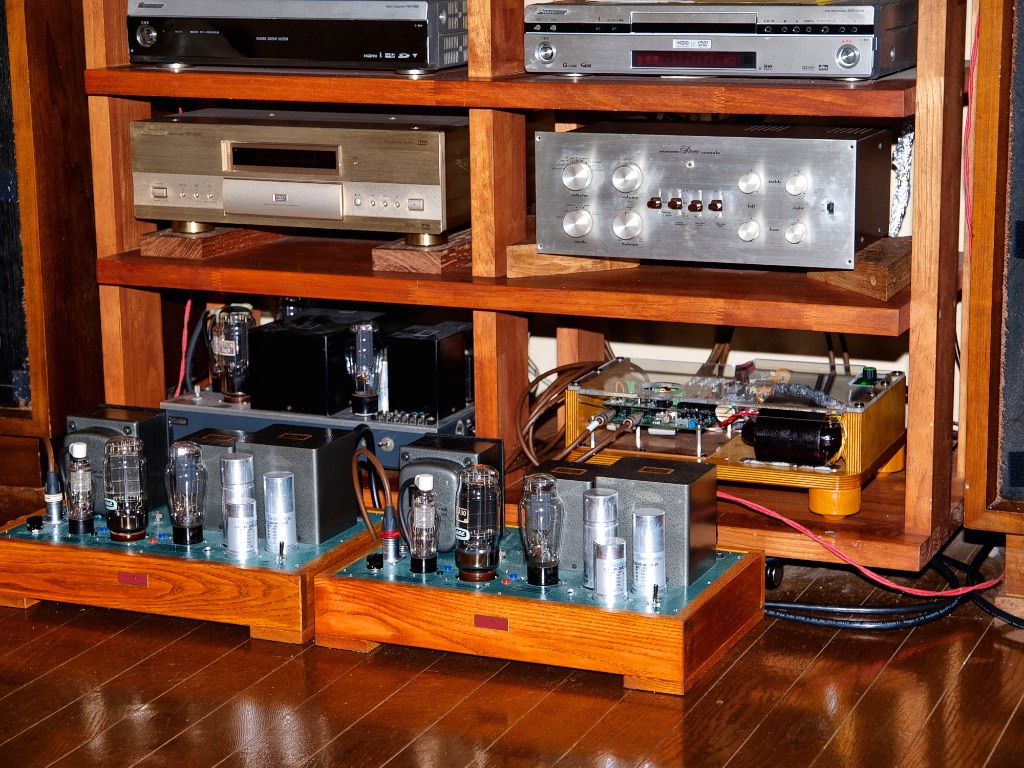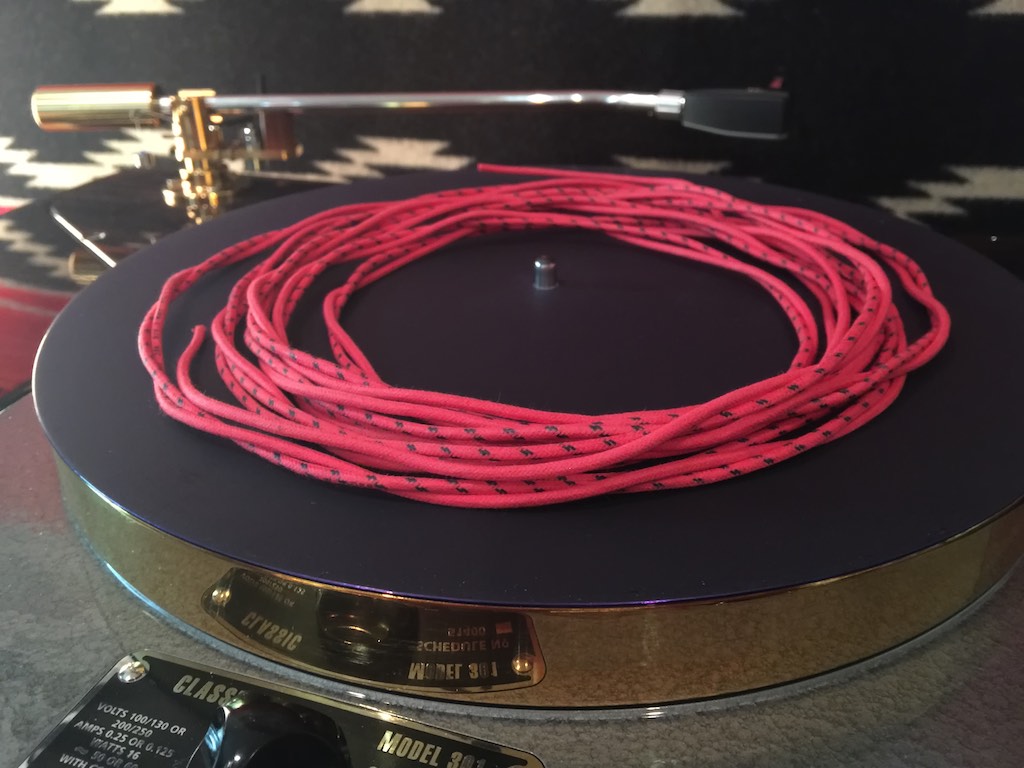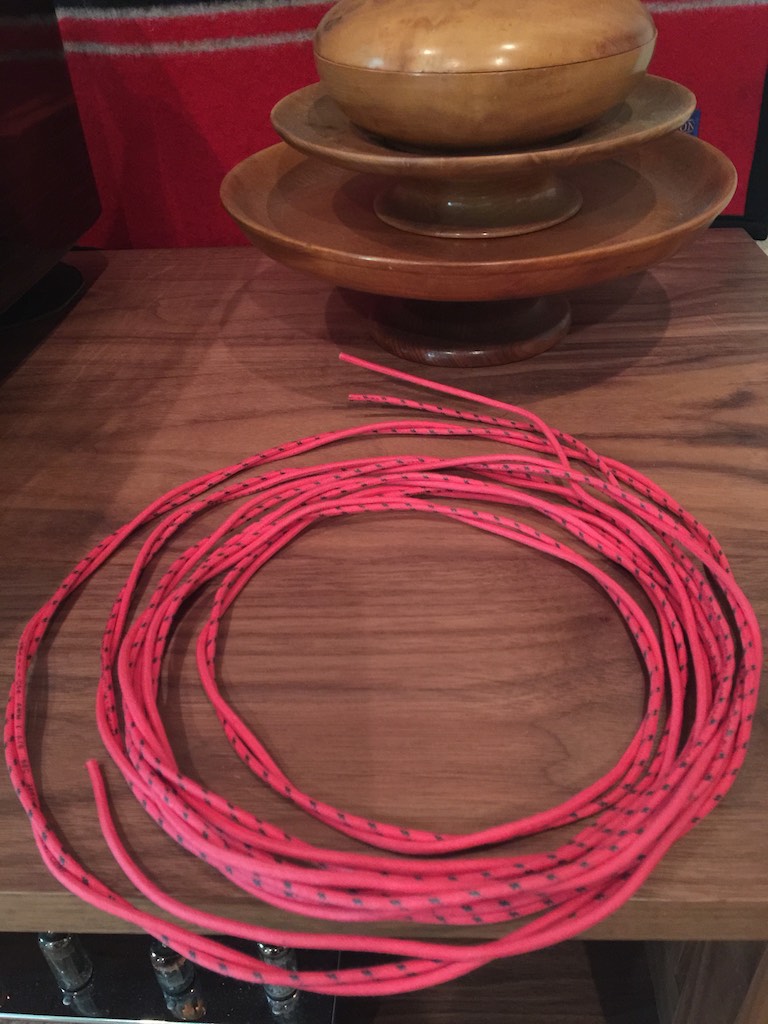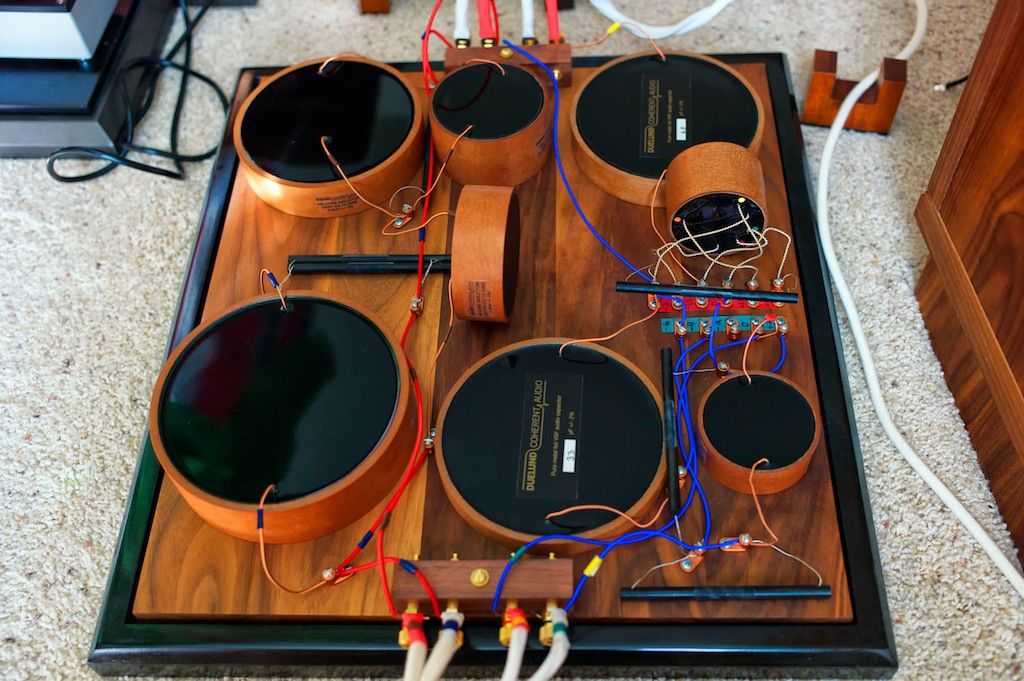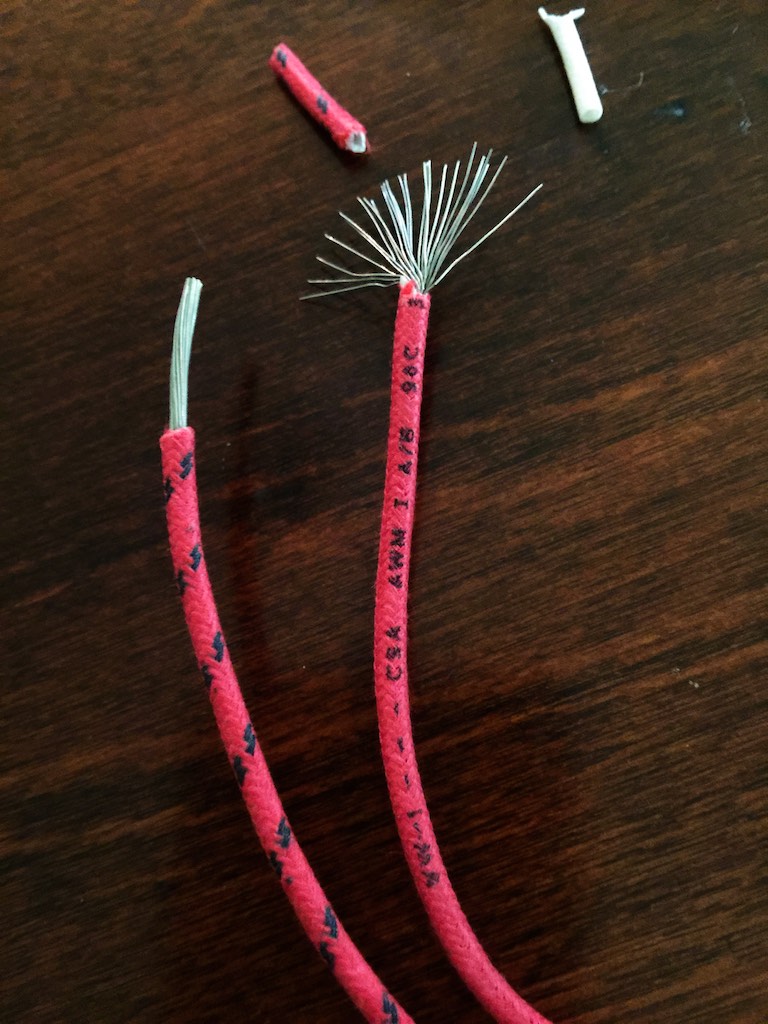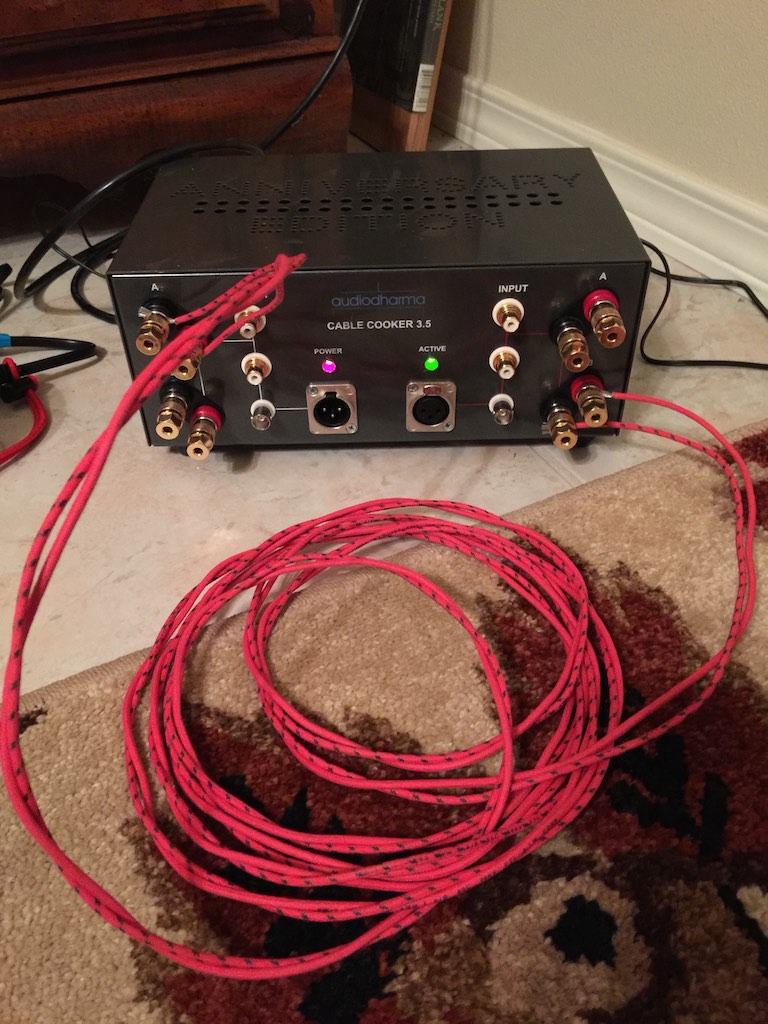Mr. Shirokazu Yazaki of SPEC Corporation (photo below, second from left) has told me how highly he regards the performance of vintage Western Electric WE16GA wire used as speaker cable.
Mr. Shirokazu Yazaki uses the Western Electric WE16GA wire as speaker cables as his personal reference both for the research & development work he does for the SPEC Corporation products (like the Real Sound Amplifier), as well as in his home reference system.
Mr. Yazaki-san had previously told me about how good the Belden 8402 microphone cable (above) was when used as RCA interconnects, and they also happen to be Mr. Yazaki-san's reference interconnects.
Mr. Yazaki-san was so kind as to send me a full set of Belden 8402 microphone cables wired as RCA interconnects, and enough Western Electric WE16GA wire to make a full set of bi-wire speaker cables for my Duelund-ized Westminster Royal SE loudspeakers, so I could experience his full reference set of wiring at once.
When I tried the Belden 8402 microphone cable as interconnects I found out they were remarkably good, on the same musical plane as my long term reference - and very impressive - Sablon Audio Panatela interconnects (the white interconnects in the photo below).
The Panatela and Belden 8402 sound quite different, however, and as I found with my trusted listening panel, different listeners will likely prefer one or the other based on their personal tastes.
No matter which way you look at it though, the Belden 8402 is an incredible DIY bargain at a mere $2.75 USD per foot, and one that deserves your attention.
The red cables in the photo above are the Western Electric WE16GA wire being used in my system as speaker cables. If you repeated everything I said about the Belden 8402, and replaced 'Belden 8402' with 'Western Electric WE16GA', you'd have a pretty good description of what the Western Electric WE16GA wire as speaker cables are like to listen to music with.
Mr. Yazaki-san told me that one his favorite vacuum tubes of all time is the very old engraved version of the Western Electric 274B (above, 3rd from the left in the monaural amplifiers), "I have tried a lot of famous rectifier tubes through many years. But only this very rare vintage rectifier could satisfy all my wishes for the playback sound or tonal character. In a word, it’s so attractive, full of musicality and absolutely free of imperfections."
Mr. Yazaki-san told me about the Western Electric WE16GA wire, that "I have same type of sound impressions about it like as 274B." Mr. Yazaki-san says the Western Electric WE16GA wire has an "artistic and organic sound quality" and I concur, it has an immediately likable tonal balance.
Mr. Yazaki-san told me that the Western Electric part number was KS13385L-1, and it was produced by American Insulated Wire Corporation in USA. Mr. Yazaki-san told me that it is, "such size of 16 gauge, the simple structure , the old primitive processing copper wire and the unexceptional tin plated used WE16GA made in USA might be the best or most natural for our hearing as an audio speaker cable ..."
Both the Belden 8402 and Western Electric WE16GA share in common a stranded, tin-coated, copper conductor. The WE16GA adds a cloth covering. Neither look particularly 'special' when you look at them, but they are tasteful looking, and of course they sound extremely good.
This makes me very curious about stranded tin-plated copper wires as being some sort of ultimate audio 'color, texture, and tone' experience that aligns very closely to how we hear things when we listen to live music. I would never have even considered this as a combination had it not been for Mr. Yazaki-san alerting me to their wonders and providing a set for me to try.
When I installed the Western Electric WE16GA as speaker cables between my McIntosh MC225 amplifier and the Duelund CAST crossovers for my Westminster Royal SE loudspeakers, I thought their sound was rich, musical, detailed, dynamic, and with a very good sense of timing, tempo, melody, that makes music sound very artistic, engaging, and dramatic. They are also very, very, natural and organic sounding, and lend a certain sense of beauty to the music that I haven't quite yet come to grips with verbalizing. (By the way, like many cables, I did find the Western Electric WE16GA to benefit from about 8-hours of conditioning on my Audiodharma Cable Cooker, making all their strong points really shine.)
Unlike the Belden 8402, as far as I can determine, the Western Electric WE16GA is no longer produced. That means you can only buy it as old stock or NOS on the vintage market, and you should be a little careful when doing so because as word has got out about its performance, forgeries have popped up.
So my apologies to you for telling you about this magic Western Electric WE16GA wire and then telling you that it is almost unobtainable, but I thought you should know about it, because you might be one of the lucky ones to run across a spool of it one day. Here's what you should do: buy it.
I have just enough Western Electric WE16GA wire left from making a set of speaker cables, that my next step will be to rewire my Duelund CAST crossovers, replacing the Neotech wire with WE16GA. That should make for a fun experiment!
As always, I hope you enjoy these little audio intrigues I write about, and from my home to yours, may you enjoy your audio hobby to the fullest!
Many thanks to Mr. Yazaki-san for sharing these vintage audio discoveries with us - very much appreciated!
Thanks for stopping by!
Additional Information:
After Mark's question below I decided to follow up with some close-up photos so you can see more of the details of what the WE16GA looks like.
Both wires have a red cloth covering that have black printing on them. The two wires in the twisted pair appear to be identical except for what is printed upon the red fabric.
The 'hot' wire in the twisted pair has black printing on one side that is a little hard to read, but I think it says 'VW-1 - - - CSA AWM 1 A/B 90C 300V FT1 A.I.W. CORP', which is spaced approximately every 7.25 inches along its length.
I don't know exactly what the wire code printed on the fabric implies, so maybe those of you who understand it can respond with a comment?
The 'ground' wire in the twisted pair has a continuous spiral pattern of black 'parallelograms' (or possibly stylized 'lightning bolts') along the length of its red fabric covering, as well as the same spaced black printing that is on the 'hot' wire.
In the photo below you can see the insulation stripped off the end of a WE16GA twisted pair.
There are two parts to the insulation that I stripped off the WE16GA, the red 'black printed' cloth covering, and an inner sleeve of some sort of plastic.
I counted 26 tinned copper wire conductors in the hot wire, and the return wire appeared identical but I didn't count the number of conductors in it. I hope that helps you identify this wire in the 'wild'.
Also of interest is this announcement from 2010 by Southwire Company: "Southwire Company today announced that it has signed a definitive agreement to purchase certain assets of Rhode Island based American Insulated Wire Corporation (AIW™), a subsidiary of Leviton Manufacturing Co. Inc." You can see more here.
I don't know if Southwire still makes a wire via AIW that is the same as the WE16GA, or even how to find out, but it would be interesting to know.
It would also be interesting to have a 'cable specialist' reverse engineer and clone the WE16GA for those who would like to buy it now. Oh "if wishes were horses ...".
Another Update:
I've got some WE16GA on the Cable Cooker for conditioning before I try it in my Duelund crossovers.





